 A visit to a Russian orphanage to adopt her first child spurred Terry into action. With her friend Randi, she launched Kidsave, a nonprofit to help older, often forgotten orphans and foster children find families and mentors.
A visit to a Russian orphanage to adopt her first child spurred Terry into action. With her friend Randi, she launched Kidsave, a nonprofit to help older, often forgotten orphans and foster children find families and mentors.
Tell us a little about your background…
I grew up in Logan, Utah. My Dad owned a jewelry store so I always worked in retail; I didn’t really like it, except when it was busy at Christmas and we were selling lots of things or when I had the opportunity to be creative. Once, my parents went away for the weekend and left me in charge of the store. A friend and I moved merchandise to the sidewalk, had a sidewalk sale, and promoted it on the radio. We had a great time—much better than dusting fingerprints off the showcases!

As a young girl with my mom
When it was time to think about college, there wasn’t a lot of choices. My mother told me I could be a nurse or a teacher and that I could only attend school in our hometown. After graduating from our local college, I taught American Indians in a school district just off the reservation and then transferred to Salt Lake City to teach English, history, and art to middle schoolers. It wasn’t my gift—I was strict and it seemed that most of the time I was trying to keep kids in their seats. After three years, I decided to retire from teaching.
I had worked for a summer, during college, at an ad agency in San Francisco and really loved it; I moved back there only to search for a job for three months without luck. The 1975 recession was in full bloom and I couldn’t find anything. So, at age 27, I ended up moving to Washington, DC because my cousin was in school there and had shared with me several jobs in communications that interested me.
I had sent resumes to my members of Congress and, as my mom and I were driving across the country, I received a phone call from Senator Jake Garn’s office asking if I was interested in a job. Indeed I was and soon found myself working as a press aide on Capitol Hill.
My big career break came about a year-and-a-half later when, through a referral by a friend, I was hired as an account manager at Porter Novelli, a PR firm creating social change. I worked on many interesting projects: breast self-examination to prevent cancer, smoking cessation, blood pressure control. I loved using a business perspective to create social change; it played into my desire to do good and make money.
I was also part of an amazing group of young people at Porter Novelli; we were all very tight, motivated, and committed. Bill Novelli and Jack Porter, the firm’s founders, were great mentors—Bill is still working and inspiring me today.

Camel riding in Egypt
After nine years, I left to start my own small PR firm, T. Baugh & Co., with a focus on health and social issues. A friend from Porter Novelli, Randi Thompson, joined me soon after.
We worked on some great projects, for example, on a USAID funded initiative helping foreign countries introduce poor women to good contraception—to encourage family planning and reduce maternal mortality via better child spacing. Our job was to manage advertising and PR programs and to train local program managers in our trade. It was challenging and exciting work—we met amazing people in wonderful countries like Niger, Uganda, Egypt, Jamaica, India.
When did you start thinking about making a change? Did you have an “aha” moment?
At almost 40, I married Don Ruschman, a work colleague. We decided we wanted to adopt and settled on adopting from Russia. In 1993, our beautiful 12-month-old daughter, Dasha, came first. After my husband and I divorced, two more children joined our family—Luda, a 3-year-old who had been in the orphanage since birth and severely neglected, and Constantine, a 10 1/2-year-old boy who had been in the orphanage for 7 years. My ex-husband became a father to all of them. When he remarried, his wife, Beth, was there for the kids and me too.
Adoption was faster back then and more open—it only took nine months to adopt Dasha. Today, adoption from Russia is closed to Americans. And the Hague Convention, which was created to help improve the quality of international adoption and standardize procedures across countries, has added significant time to the process—up to two years.
My first trip to Russia to adopt Dasha was the catalyst for my reinvention. I was stunned by the conditions in Dasha’s orphanage: There were ten children—babies, toddlers, and school-age—to every caregiver. I couldn’t believe the level of neglect. I had seen many poor children in my travels, but to see kids warehoused in orphanages without parents, love, or hope was overwhelming.
When I got home, I told Randi about it. She had a business trip scheduled for Kazakhstan and made a point to visit an orphanage there for older kids. She saw children ages 7-15 with no parents and no place to go. At 15, they were forced to leave and live on the streets.
Randi and I felt compelled to do something.
What is your next act?
In 1997, Randi and I founded Kidsave, a nonprofit organization whose mission is to create change so older, often forgotten, orphanage and foster kids grow up in families and are connected to caring adults. I love working with my friends on our shared passion; many of us have been advocating for a long time for better care for children, and we have built really meaningful personal relationships.
Randi and I work every day for a purpose. We take pride in building something that helps kids. We both, somehow, had the right personalities and skillsets at the right time to be able to push change along in a way it wasn’t happening when we started. I was proud of my work in my own company as well, but that culminating effect on kids’ lives—and seeing the kids grow up and succeed— has been a wonderful reward.

Family shot in the early days of Kidsave: I’m in grey tee with Luda. My mom is in black with Dasha.
How did you get started?
We looked for nonprofits that were taking on the issue of moving children into permanent families but found their focus was on babies. We thought UNICEF and other global development groups would do that, but they didn’t. We looked at churches but they tend to build orphanages, or paint them, or play with the kids rather than focus on getting kids permanent families.
Today the field has grown. JK Rowling had actually started the Lumos Foundation with a very similar mission to Kidsave, but we didn’t learn of it until much later. Many other organizations now care about helping orphans. The niche of helping older children is also being filled by The Dave Thomas Foundation. A new organization, The Global Alliance for Children, is also supporting permanency for children along with ending violence, abuse, and neglect for children and ensuring kids meet their developmental milestones. Several adoption agencies have also expanded their scope to help children move into families overseas.
Since we couldn’t find any established organizations that were doing this work at the time, we decided to start our own. We knew nothing about running a charity, but we had a strong desire to create change. Still, we seemed to be putting people to sleep when we tried to get them to care about the plight of older orphans.
Then we heard about a program that had given 13 children from foreign orphanages summer vacations in the US. Bill Novelli, my old boss, always said it didn’t matter if you had an original idea or applied someone else’s. We used our marketing skills to scale up that summer vacation idea, with the goal to build awareness and help more children find adoptive families.
I continued to work at my PR firm while Randi focused exclusively on Kidsave. I eventually closed my business so I could work full-time on Kidsave as well. We were driven to succeed.
In the summer of 1999, Kidsave gave 177 older orphanage children summer vacations in the US—97% of these children were adopted by their American host families. It was a miracle for these children and a confirmation of our work for Randi and me. It goes beyond marketing to human nature. When a family meets a child in need, many fall in love and are compelled to help. They, like us, become passionate.

With Randi at the Kidsave LA Gala, 2015
Tell us about the Family Visit Model.
We created Kidsave’s Family Visit Model based on that initial success. We have two programs: Summer Miracles and Weekend Miracles.
Summer Miracles is a four-week hosting program that provides older children growing up in foster care and orphanages in Colombia with a unique summer experience to share the love and life of a family, attend day camp, and enjoy educational and cultural activities in the United States. While the children are here, they receive medical, dental, and psychological attention as needed and cultivate a lifetime connection with an American family.

Summer Miracles families
Through Weekend Miracles, Kidsave pairs older orphans and foster kids in Los Angeles County with local host families who make a one-year commitment to host a child at least two weekends per month. Our host families volunteer to give these children a chance to experience family life and advocate for them, working with Kidsave to help them meet possible adoptive families. Thus far, over 200 kids in LA have been served by this program and 80% of kids in the program have been matched with adoptive families, legal guardians, and long-term mentors.
Our mission is to create global change—we work in Russia, Colombia, and Sierra Leone to help governments and child welfare professionals use the Family Visit Model and other mentoring programs to place their own orphans into their local families. Over the years, we believe our training and programs all around the world have helped about 15,000 children connect to committed parents and caring adults.
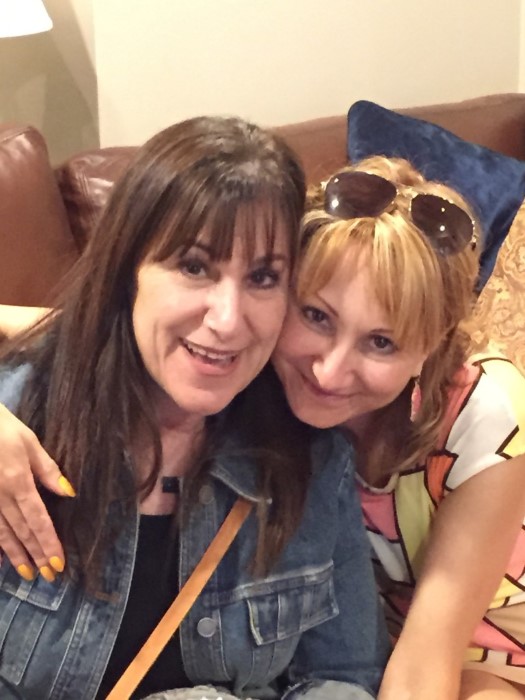
Kidsave senior leaders Lauren Reicher Gordon, who directs our Family Visit Model programs, and Tatiana Stafford, who oversees Kidsave Russia and Eastern Europe.
Who are the families who might be interested in adopting older children? How do you find them?
Interested families cover a broad range of people—singles who want to help or adopt a child, couples whose kids are grown but who still want to parent, couples in second marriages where one has had kids and the other hasn’t. Colombia (where our summer program kids are from) currently won’t allow gay adoption but in our US foster care program, we also have gay and lesbian families.
There are also people who just want to help kids by hosting them and advocating for them; they become mentors to foster children through Weekend Miracles. Some kids are so hurt by the system that they don’t want to be adopted. For these kids, we try to be sure they are tightly connected to their host or another individual who becomes their mentor and advocate in many ways. Even though the commitment only needs to be one year for the weekend program, our families tend to stay involved much longer. It takes a long time for the kids to relax and begin to trust the families, but it’s amazing, they do. For some of these kids, these adults are the only people who they have known in their lives who haven’t been paid to be with them.

KidSave host Kimberly Easson advocated for her host daughter (who found a family!)
We find these families on the Internet, through publicity, and at events, we host on weekends. In the Weekend Miracles program, we also do community exhibits at churches, farmers’ markets, adoption fairs, etc.
The Family Visit Model works well for people who want to get to know a child better before making the decision to adopt. Some single, working women also are seeing what it would be like to be a working parent.
To vet these adoptive and host families, we have at least one home visit by a social worker and conduct background checks to verify there is no record (police, FBI, child abuse, driving). Potential families attend orientations and training.
How do you choose the children in your programs?
For Summer Miracles, the government of Colombia has social workers who recommend kids, then a social worker from an adoption agency partner, our program manager, and the Colombian Kidsave social worker review the files and go back and forth to make final determinations. We target kids ages 5 to 11, but we typically get kids who are 10 to 15—the Colombian government keeps giving us older and older kids because they know we will work to get them, families.
For Weekend Miracles, the Los Angeles Department of Children and Family Services recommends kids to us. The age range is 9-18.
To learn more about kids who currently need families, visit the Meet the Kids Gallery.
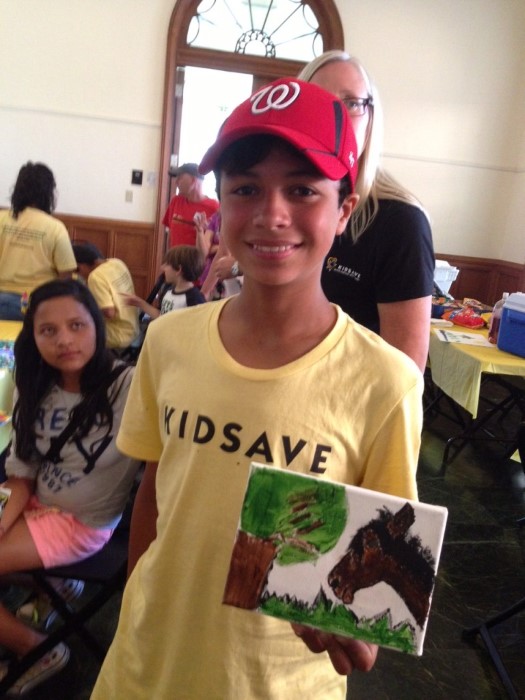
What challenges have you encountered along the way?
This is the hardest work I have ever done. There were times when Randi and I didn’t know where the money would come from or whether we could keep operating our programs. We added new countries and new programs because we believed “if we build it they will come”—that people would support our work. And generally, that has happened.
I have much frustration that governments are slow to adapt to change in seeking greater permanency for children. We have great working relationships with foreign governments but cultural differences can be challenging. We are always working to get the kid out in the community so people can meet them. We tend to feel the clock is ticking and people should work in haste to help these kids get families as quickly as possible. Bureaucracies often don’t work that way. Local nonprofits are critical to the success of our model in foreign countries.
We have worked with the US government to get them to pay greater attention to children outside of family care, and we are inching our way to greater attention being paid in this area. But there is still no diplomatic authority or Congressional mandate to support the USA helping children living outside of family care find families. And there is still insufficient funding and attention for moving kids into permanent families in the USA and abroad.

Kidsave families take to Capitol Hill to let Congress know, “It’s not okay for kids to grow up without parents!”
Work-family balance was also a challenge when my children were young. I have always worked a lot of hours—my kids were dragged to many a Kidsave event. It was always hard to step away from my work, but I needed to be there for my kids. I’d fix dinner and spend time, then work late into the night. There are no easy answers for working moms; we have to do it all. I travel more now that the kids are older so our family time is still limited, but I try to plan dinners or weekend brunches with my son and daughters.
What keeps you going?
The amazing children we meet keep me going. Randi and I have worked tirelessly, with our wonderful staff, volunteers, and Board to advocate for these children. We have been discouraged and lost project funding, we have seen the miracles that volunteers make in kids’ lives, and we have seen countries make poor mistakes—and good decisions—about children.
To hear personal stories of kids and families who have been touched by Kidsave, check out these videos: http://www.kidsave.org/orphans-for-adoption/kidsave-videos/

Kidsave girls Julia and Katya all grown up. A local TV station covered their story. See it here.
Do you ever think about giving up?
Not really. Every time we think about stopping a program, we think about the kids who wouldn’t get helped. It keeps us going—even to our detriment.
Having a partner in this venture has made all the difference. Randi and I always joke that we are the other half of each other’s brain—together we have one brain. We share the same mentor and background, Bill Novelli, and background from Porter Novelli. Our judgments are mostly the same but our personalities are different; I couldn’t do without her energy and drive. I am very grateful that she has always been by my side. We are sometimes frustrated with each other, but our commitment to the same outcomes always re-balances us and keeps us going. She has been an amazing partner.
Our families and friends have been exceptionally supportive. Our children sacrificed weekends, summers, vacations, and lots of mom-time. At the same time, they gained exposure to children less fortunate than they; I hope they gained a sense of compassion.
Randi is married to a great guy, Chris Reid, who has been a big Kidsave supporter. My ex-husband, Don, has been there since the beginning, always willing to help with whatever we needed. He has been amazing.
Our friends have been our backbone, our livelihood, and our biggest cheerleaders. Randi and I both have dear girlfriends who invested substantially to keep us going the first couple of years. We have asked everyone we know for money and in-kind donations and people have always responded. Our friends have been amazing. And we have met so many new friends along the way who supported us on our Board, in committees, as donors.
At the end of the day, we are still standing because of our village of supporters, the diversity of projects, and our commitment to change.

Where do you get your funding?
We get our funding from individuals, corporate sponsors, foundations, events, and online giving. Our Summer Miracles families help us raise money and pay hosting fees. We always run in the black and we watch cash and expenses carefully, but it’s hard. We have no grant funding or specific donors for things we have to do, like operate a website, talk to governments about change, do the bookkeeping, manage HR. We have to make that spending up with contributions. We’re always working to make ends meet. We don’t have an endowment so we start from zero every year.
Our next challenge: to make our organization sustainable, so that when we retire Kidsave’s work will continue. The problem of children stuck in orphanages is far from solved.
Our goal is to give one million children families or lifelong connections with adults by 2020—4½ short years from now. We can do this through advocacy: by changing laws that will open the path for many more kids to have families and by training countries in the use of our model.
We also need the financial resources to accomplish our goal. One million is a steep number, but it reflects the magnitude of the problem and the significant impact we would like to make. We hope to be able to help fund people in different communities around the world to do this work. We are now looking at how to take apart our business model so that it can generate the funds to do this.

Amazing volunteers Elisa Rapaport and Michael Schoenfeld at a Summer Miracles event. Once their children leave for camp, they take on Kidsave kids for the summer. They have hosted four years in a row. Here they are with two girls they helped find homes for. two girls, they hosted and helped find families.
What have you learned through this process?
I have learned a lot—much of which I rarely reflect upon. I have learned that it’s important to keep going after something I believe. I have learned that friendship is golden and that people are willing to help when asked. I have learned that positive thoughts attract positive outcomes. Negativity and skepticism do not attract success. Respect is important. Relationships are everything.
What advice do you have for those interested in starting a nonprofit?
I would encourage them to not start from scratch if they can avoid it. There is so much good work going on in many areas, and the administrative side of operating a nonprofit is very costly and time-consuming. If you have a passion, find an individual or another organization—or both—with which to partner. Set yourself up to be supported as there will be dark, long nights ahead.

What resources do you recommend?
Books I love in my field:
The Boy Who Was Raised as a Dog: And Other Stories from a Child Psychiatrist’s Notebook–What Traumatized Children Can Teach Us About Loss, Love, and Healing by Bruce Perry and Maria Szalavitz
Orphan Train by Christina Baker Kline
Made to Stick: Why Some Ideas Survive and Others Die by Chip Heath and Dan Heath
How to Change the World: Social Entrepreneurs and the Power of New Ideas, Updated Edition by David Bornstein
Writing by Philip Kotler, Bill Novelli and classic marketing texts are also useful.
Websites for my field:
If you are interested in nonprofit work the website I love is Charity: Water. They keep it simple.
Watch the videos at the Center for the Developing Child at Harvard—they are great at explaining the brain and why damage is done to children in orphanages and other neglectful situations.
And of course Kidsave’s website and our Family Visit Model page.
Programs:
Last fall I did The Gate program; it’s a real pathway to work with your subconscious to help improve results.
A cleanse at Hacienda del Sol in Costa Rica transformed the way I eat and live. Amazing place. I loved it so much I bought a house next door!
How old are your children now? Are they involved in Kidsave?
I’m so proud of all my children. My first adopted child, Dasha, is now 23. She is organizing events for our local Summer Miracles program and interned here last year after she graduated from college. She now has a full-time job, has moved into her own apartment, and is supporting herself.
My second adopted child, Luda, was 3 when she was adopted; she is now 22 and is a student at Montgomery College. She helps Kidsave with some photography but is busy with her work and school at the moment. She is a budding entrepreneur, managing a pet–sitting business that she has steadily grown.
Constantine, who is the oldest at 25, was adopted last—at age 10 1/2. He just graduated from college with a degree in cyber security and works for Booz Allen, a big consulting firm. He did all the wiring for our office computer system, helps with our computers, cleans up viruses, and is currently reviving cell phones to send to Sierra Leone. He is also getting married to a talented young woman, Ashley Disque, in September. He has two biological sisters who were brought over here by Kidsave and became part of another family. Both girls now have adorable 3-year-olds. They are all great success stories of how saving one child can save the next generation.
I also have one adoption that did not work. I still support this child but was not able to keep her in my home. It is a constant reminder of the importance of nurturing for children, starting at birth.

Constantine, Dasha, and Luda at Dasha’s college graduation, 2014
What’s next for you?
My next act is multi-faceted.
I am committed to Kidsave’s work and ensuring that it continues. This will include, eventually, bringing in new leadership for the organization, hopefully when it is on solid, sustainable financial footing. Our Board is currently looking at ways to do this. It’s an interesting exercise and a priority. I do not plan to leave Kidsave anytime soon. The work keeps my brain working and Alzheimer’s at bay.
In addition to Kidsave, I do value time away from it. I find that rest, exercise, and the company of good friends help me think better about solutions. Last year, I bought a house in Costa Rica, which I love. I have made some wonderful friends there and found a community of people who changed my way of eating (to a mostly plant-based diet) and my thinking about the healing power of whole food. I love yoga, walking, and being outside rather than always being stuck in an office at my computer. This is a struggle. I love introducing friends who are sick to a new way of health.
My nonprofit career has not lent itself to a smart retirement strategy. I must create another revenue stream so that I can live without dependence on my children in my old age. Reinvention should be a continual state of being. I feel I am still in that stage—now even more than when I started Kidsave. Women switching careers or starting a second act need the courage to take the step. As Franklin Roosevelt said, “There is nothing to fear but fear itself.” Many find that fear can be exhilarating.
Contact Terry Baugh at Terry@kidsave.org
President and Co-Founder, Kidsave – 4622 Wisconsin Ave., N.W. Suite 202 | Washington, DC | 20016 Direct: 202-503-3111 | Main Office: 202-503-3100
To host or mentor a child, click here.
Meet the kids: Click here.
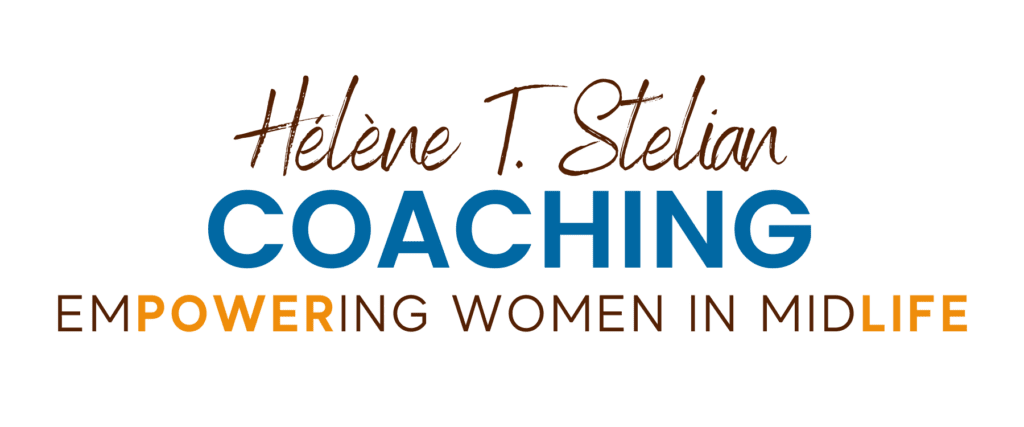
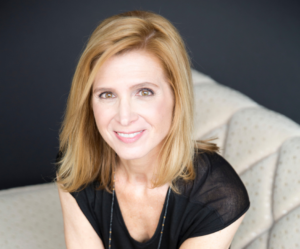
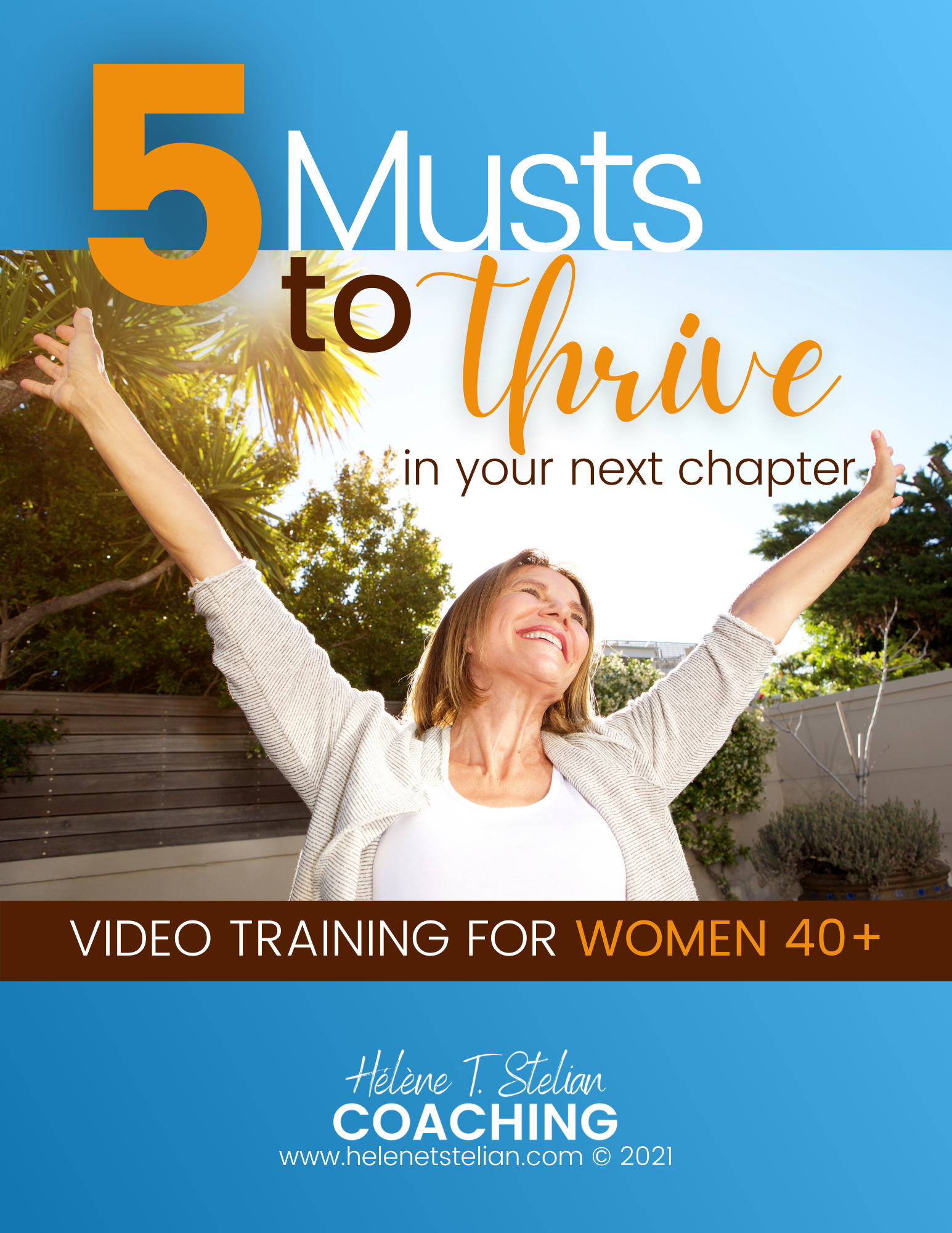
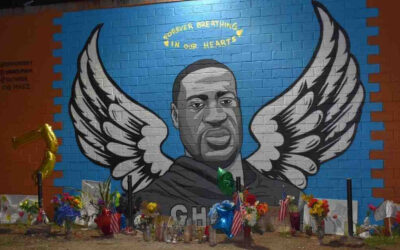


0 Comments
Trackbacks/Pingbacks